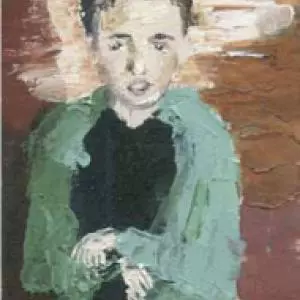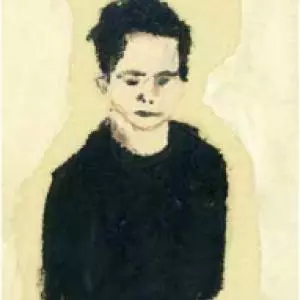SILENT INTERACTIONS
Vernissage April 17th 2013
7 pm
Finissage May 14th
The radical expressivity of Gina Hoover’s paintings is quickly apparent. Her fresh and immediate portraits and landscapes display fast, confident brushwork and an idiosyncratic palette that testify to a kind of visionary strength. In the reds and burgundies, the yellows, greens and blue, an almost menacing black we see chromatic subtleties that echo Goya, Manet, or the more recent examples of Wolfgang Tillmans and Marlene Dumas. The artist seems to have acquired in a short period of time the history of painting of the last two hundred years. She seems in particular to have absorbed the lessons of Manet, who shocked nineteenth century Paris with his unsentimental, often hastily painted vignettes of modern urban life. In her surprisingly self-confident Facebook Series of 150 postcard- sized portraits, Gina Hoover’s gradations of grays and blacks, her blunt brushwork, sketchy backgrounds, fragmentary suggestions of nearly abstract form, and above all her anti-Romantic acceptance of her subjects as they choose to present themselves recall such pictures as Berthe Morisot en chapeau de deuil a long voile, George Moore dans le jardin, and Mallarmé by the great founding figure of early modernism.
With her Facebook portraits, Gina Hoover has tried to tell the human stories of today’s young people, creating a personal portrait gallery that comes off as somewhat comic, despite –or maybe because of– the exaggeratedly solemn attitudes taken by many of her subjects. Slightly disturbing, even mad faces push out of the pictures as if wishing to invade our space. Hoover’s sharp observations of random details –shocks of wild hair, black eyeglasses, excessive make-up, physical gesturing– help characterize the individuals (the shy intellectual, the carefree young girl, etc.) and allow them to indulge in their provocative poses, while her color and paint handling underline the chaotic fragility of their self-defined identities. These children of the twenty-first century are revealed as being fun loving, tender, anguished, pretentious, disturbed, and perplexed by an uncertain era.
Similarly, her larger canvases contain blurred images of enigmatic persons set in rural backdrops that recall Depression-era America. They are often relatives of the artist captured in old photos rescued from dusty attics and given new life. The 2011 portrait Jacob C. Willems owes formal debts to twentieth century painted portraits, while at the same time still embodying codes of photography, in particular the sense of arrested time that paradoxically seems to invite us to close our eyes and journey backward into memory and imagination.
by Pia Candinas
 Share / Save
Share / Save











Comments 0
Say something